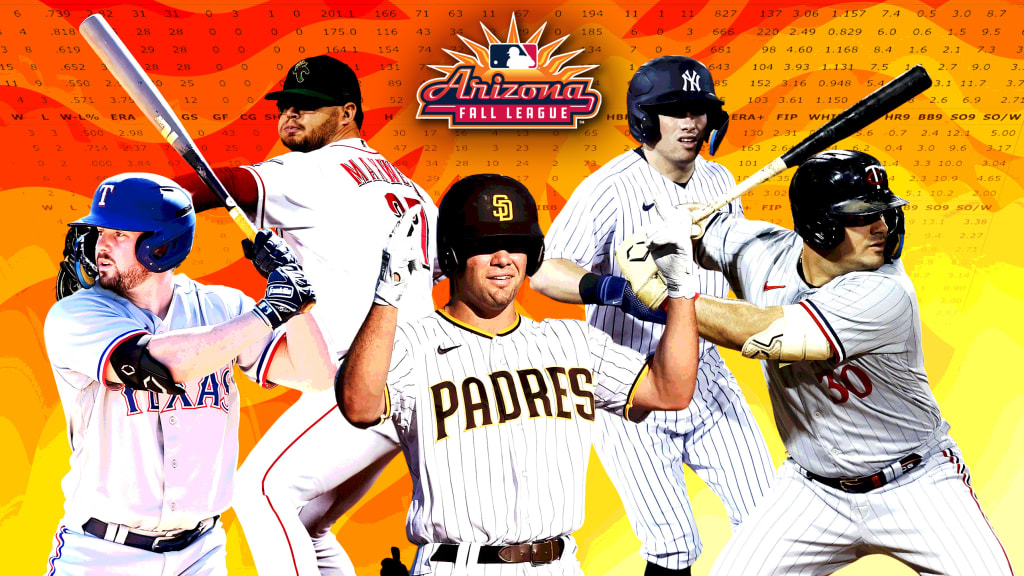A good batting average in baseball is typically considered to be around .300 or above. Achieving this indicates a player consistently hits 3 out of 10 at-bats.
Understanding a player’s batting average is crucial for assessing their effectiveness at the plate. The batting average, a central metric in baseball statistics, gauges a player’s overall hitting success. Calculated as the number of hits divided by official at-bats, it presents a straightforward analysis of a batter’s performance.
Fans and coaches alike follow batting averages to identify top performers and potential areas for improvement. A batting average above the. 300 mark is a benchmark for excellence, distinguishing those hitters who maintain a high level of proficiency in reaching base through a hit. While variations occur based on league averages and eras, a consistent. 300 average continues to serve as a hallmark of batting skill within the sport.
The Sweet Spot Of Batting Averages
In baseball, every swing matters. But what number tells us a player hits well? That’s the batting average. Let’s dive into the ‘sweet spot’ for batters – a range that separates the good from the great.
Cracking The Batting Average Code
A batting average is a hitter’s number of safe hits divided by their total at-bats. It’s simple: more hits = higher average. But, how high of an average is good? Anything above .300 is considered excellent, while hitting below .200 is a sign of struggle. .300 is the ‘sweet spot’, signaling a player consistently gets on base almost one-third of the time.
Pro-batter Averages: A Benchmark
The greats in baseball aim for that coveted .300 average, or even better. Achieving this consistently can mean a player is among the elite. Here’s a breakdown using a table:
| Range | Classification |
|---|---|
| .300+ | Excellent |
| .250-.299 | Good |
| .200-.249 | Average |
| Below .200 | Struggling |
Learning these numbers helps fans understand a player’s impact. Good hitters live in the .250-.299 range, proving their worth at the plate. Yet, crossing into the .300+ zone marks true batting prowess. These are the players kids look up to.
History’s Batting Average Benchmarks
History’s Batting Average Benchmarks:
In the world of baseball, measuring a player’s prowess at the plate comes down to their batting average. This key statistic has evolved over time and stands as a testament to skill and adaptability in the changing tides of the game. Let’s explore the historic benchmarks that have defined baseball’s greatest hitters and how the numbers have shifted through the decades.
The Evolution Of The Average
The batting average, simply calculated by dividing hits by at-bats, wasn’t always the giant it is today. In the 1800s, .300 was a rarity. Over the years, as players honed their art, .300 became the hallmark of consistency and skill at the plate.
| Time Period | Average Benchmark |
|---|---|
| 19th Century | .300 |
| 1920s | .400 |
| Modern Era | .260 – .280 |
The rise of analytics and changing strategies, like the emphasis on power hitting, adjusted what’s considered a good average today.
Memorable Peaks In Batting Stats
- Ty Cobb: Amassed a .366 career average, an all-time high.
- Rogers Hornsby: Hit over .400 three times in his career.
- Ted Williams: Last to hit over .400 in a single season, with .406 in 1941.
These peaks are rare achievements, showcasing the blend of talent and era-specific factors that contribute to baseball lore. Today, a .300 average is a respected benchmark, signaling a player as top-tier. However, context remains key. Stadiums, player fitness, pitching techniques, and rules impact what comprises an exceptional batting average.
Understanding Batting Average Calculations
Stepping up to the plate in baseball isn’t just about hitting the ball; it’s about marking success with a solid batting average. Let’s decode what goes into calculating this critical measure and figure out just what defines a ‘good’ batting average.
Hits And At-bats: The Basic Formula
To grasp a batter’s effectiveness, we start with a basic formula: Batting Average (BA) equals the number of hits divided by the number of at-bats. Sounds simple, right? It is, but these numbers tell a deeper story.
BA = Hits / At-Bats- Hits are counted when the batter reaches any base without an error or a fielder’s choice.
- At-Bats (AB) include times at the plate except walks, hit by pitch, sacrifices, and interference.
To calculate, one simply counts the hits, counts the at-bats, and divides the first by the latter.
Going Beyond Simple Division
The batting average gives a quick snapshot, but the story doesn’t end there. Advanced stats dive deeper.
| Stat | Purpose |
|---|---|
| OBP (On-Base Percentage) | Considers walks and hit by pitch. |
| SLG (Slugging Percentage) | Measures power by accounting for total bases. |
| OPS (On-Base plus Slugging) | Combines OBP and SLG for an overall picture. |
These additional stats refine our view of a player’s performance, suggesting that batting average is just the tip of the iceberg.
The Significance Of The .300 Mark
In the world of baseball, batting averages tell a clear story. Achieving a .300 average is a goal many strive for, but few reach. This magical number has long been the hallmark of a great hitter. It separates the good from the truly exceptional. Players who hit this mark consistently find themselves among the elite, often heralded for their prowess at the plate.
The .300 batting average isn’t just a number; it’s a symbol of consistent performance. A player with a .300 or higher average is often seen as a reliable asset, contributing positively to the team’s success. Let’s delve deeper into what defines this prestigious mark.
.300: The Threshold Of Excellence
The .300 batting average is an informal standard, a threshold that has stood the test of time. A batter with a .300 solidifies their place as an expert in hitting.
A .300 average means out of every ten at-bats, the hitter successfully gets on base with a hit three times. Not an easy feat. It demands consistency, skill, and an understanding of the game that few can master.
The Rarity Of .300 In Modern Baseball
Times change and so has the game of baseball. Power hitting, analytics, and pitching strategies have evolved. This evolution makes the .300 average a rarer achievement in today’s game.
Striking out is less stigmatized than it once was, with players often swinging for the fences. This approach impacts batting averages, with fewer players reaching the coveted .300 mark.
Attaining a .300 average in modern baseball is both a testament to a player’s skill and a nod to the classic era of the sport. Let’s review some current statistics to illustrate this point.
| Year | Number of .300 Hitters |
|---|---|
| 2019 | 20 |
| 2020 | 16 |
| 2021 | 18 |
The table shows a clear decline in players who make it past the .300 line. A .300 hitter was more common in the past. Today, they stand out as rare gems in the baseball landscape.
Batting Average Leaders By Era
Understanding the history of baseball is incomplete without analyzing the batting average leaders by era. A player’s batting average (BA) is a key statistic, signifying the ratio of a player’s hits to their at-bats. Over time, the benchmark for what constitutes a “good” batting average has shifted due to numerous factors, including changes in pitching strategies, ballparks, and equipment. Let’s explore the heroes of the batter’s box through different eras and see how batting averages have evolved.
Legends Of The Past
The golden age of baseball saw legends who set the bar high for batting averages. Icons like Ty Cobb dominated this statistic in their times. Here’s a glimpse at some of the standout average leaders from the past:
| Player | Years Active | Batting Average |
|---|---|---|
| Ty Cobb | 1905-1928 | .366 |
| Rogers Hornsby | 1915-1937 | .358 |
| Shoeless Joe Jackson | 1908-1920 | .356 |
Today’s Batting Average Standouts
The modern game has introduced new challenges, but brilliant hitters continue to shine. Current stars have impressive averages that keep them ahead in the game. Check out these batting average leaders of today:
- Miguel Cabrera – Maintains excellence with precision and prowess.
- Albert Pujols – Consistently delivers hits against the toughest pitchers.
- Mike Trout – Combines power and average, setting high standards.
Leaders from each era showcase the changing dynamics of baseball. By examining these averages, we gain insight into the way the game is played and revered across generations.

Credit: www.sandiegouniontribune.com
Factors Influencing Batting Averages
Understanding what makes a good batting average in baseball is like piecing together a complex puzzle. Let’s explore the pieces that make a big-league hitter successful.
Pitching Prowess And Hitter’s Impact
The clash between pitcher and batter is at the heart of baseball. A pitcher’s bag of tricks—speed, movement, and accuracy—can make or break a hitter’s average. Batters face different pitchers, each with unique skills. Some factors include:
- Fastballs, curveballs, and sliders: These can be hard to hit.
- Control and command: Pitchers who locate pitches well challenge hitters.
- Game strategy: Pitchers mix up pitches to outsmart batters.
Ballparks And Their Quirks
No two ballparks are the same. This is crucial. From the outfield’s size to the wall’s height, every ballpark plays differently. Here’s why they matter:
| Ballpark Feature | Effect on Batting Average |
|---|---|
| Outfield dimensions | Larger outfields may increase hits; smaller may decrease them. |
| Altitude | High altitudes can lead to more home runs. |
| Wall height | Tall walls can turn potential home runs into doubles or singles. |
Remember, even the weather at the ballpark can affect how far the ball travels. So, every hitter’s average is a mix of these elements and their talent.
Comparative Analysis: Batting Averages Across Leagues
In baseball, batting average tells us how often a player gets a hit. It’s a big deal for players and fans alike. When we look at how players are doing, it’s cool to compare different leagues. Each league has its own level of competition. Let’s check out how batting averages vary in Major and Minor leagues, and throw in the International leagues into the mix.
Major Vs. Minor League Variances
The Major League Baseball (MLB) is the top spot for baseball talent. A good batting average in the MLB is around .300.
In the Minor Leagues, players are sharpening their skills. A batting average over .300 is still good, but more common here.
| League | Good Batting Average |
|---|---|
| MLB | .300 |
| Minor League | .300+ |
International Leagues: A Different Ball Game
International leagues bring more variety. In places like Japan or Korea, batting averages can differ.
- In Japan (NPB), a .270 average is quite good.
- The Korean Baseball Organization (KBO) sees good averages around .290.
The style of play changes the game overseas. Pitchers may be less speedy but more strategic. This shifts what we think of as a “good” batting average.
On-base Percentage: The New Batting Average?
Imagine standing at home plate, eyes locked on the pitcher, bat ready. You’re able to reach base often, becoming a valuable player for the team. This ability to get on base consistently is measured by a statistic known as On-Base Percentage (OBP), which has become a magnifying glass through which player efficiency is closely examined.
On-Base Percentage has won the hearts of many coaches and analysts alike. It captures a batter’s true effectiveness by considering not just hits, but also walks, and hit-by-pitches, emphasizing the importance of avoiding outs over simply hitting the ball.
- Getting on base is a fundamental part of the game.
- OBP accounts for all the ways a batter can reach base.
- It is a more comprehensive measure of player performance.
The traditional Batting Average (BA) only considers hits, giving a limited view. OBP adds layers by including walks and hit-by-pitches. It reveals players who excel at getting on base by any means. Let’s compare them side-by-side:
| Statistic | Description | Indicators of Success |
|---|---|---|
| Batting Average (BA) | Number of hits divided by at-bats | .300 or above |
| On-Base Percentage (OBP) | Hits + Walks + Hit by Pitch divided by At-Bats + Walks + Hit by Pitch + Sacrifice Flies | .360 or above |
While a .300 batting average is considered good, an .360 OBP is now synonymous with on-base success. The evolution from BA to OBP signifies a deeper understanding of the game, where the ability to avoid making an out holds paramount importance.
The Impact Of Technology On Batting Averages
Baseball players aim for high batting averages. Technology shapes that quest. Let’s dig into how tech tools like video analysis and Statcast alter hitting success.
Video Analysis And Swing Adjustments
Video analysis changes the game for batters. Players watch their swings in slow motion. They fine-tune each movement for better hits. Coaches use this footage to spot flaws. They make suggestions to get more base hits.
- Frame-by-frame reviews reveal small errors.
- Better swing paths emerge from video comparisons.
- Tailored coaching plans develop from visual feedback.
Technology allows for real-time swing adjustments. Batters tweak their techniques. They become more consistent. Their batting averages often improve. Even small changes can lead to big results.
Statcast And Advanced Metrics
Statcast uses high-tech cameras and radar. It tracks every move on the field. Batters learn about their exit velocity. They study launch angles. These metrics pinpoint strengths and weaknesses.
- Players grasp the impact of exit velocity on hits.
- Launch angles inform how to lift the ball for home runs.
- Sprint speed figures tell runners how quick they are.
With Statcast data, hitters focus on the science of batting. They see clear paths to boosting their averages. Advanced metrics offer a deep dive into hitting technique. Teams and players use this knowledge for strategic training.
| Statcast Metric | Description | Impact on BA |
|---|---|---|
| Exit Velocity | Speed of the ball off the bat | Higher velocity can lead to more hits |
| Launch Angle | Angle of the ball’s path after hit | Optimal angles can result in extra base hits |
| Sprint Speed | Player’s running speed | Quicker players can beat out infield hits |
In summary, technology offers insights like never before. It empowers hitters to raise their game. A good batting average is within reach with the right tech tools.
Slumps And Streaks: The Volatility Of Batting Averages
In the world of baseball, a player’s batting average is a testament to their skill at the plate. But even the best hitters face the ebb and flow of the game. Moments of triumph can quickly give way to periods of struggle. This dynamic nature is intrinsic to baseball, making each player’s average both impressive and precarious. Understanding the factors behind this volatility can unravel some of baseball’s most anxious spells and thrilling hot streaks.
Psychology Of A Batting Slump
Every batter knows the dread of a slump. Confidence wanes. Self-doubt creeps in. The mental side of baseball cannot be understated.
- Stress magnifies minor issues, making them seem insurmountable.
- Frustration builds with each at-bat, often affecting focus and strategy.
- Pressure to perform can compound these factors, making relaxation at the plate challenging.
Coaches and players alike work to decipher the mental puzzle of a slump. The goal: restoring a hitter’s mindset to its optimal state.
The Anatomy Of A Hitting Streak
On the flip side, a hitting streak can set a batter ablaze with confidence. It’s a period where everything clicks.
| Factor | Impact |
|---|---|
| Rhythm | The batter’s timing syncs perfectly with the pitch. |
| Confidence | With each hit, self-belief fuels the next at-bat. |
| Focus | Distractions fall away, leaving pure concentration. |
A player in the right zone can maintain a streak through a combination of physical readiness and mental sharpness. It’s a showcase of peak performance that can elevate a team and captivate fans.
Modern Strategies Affecting Batting Averages
The world of baseball evolves continuously, giving rise to new strategies. These strategies affect how players hit the ball. That, in turn, affects batting averages. Modern strategies are redefining what constitutes a good batting average.
Shifts And Analytics: A New Defense
Teams now rely heavily on data. Data decides where fielders should stand. This is called the “shift”. A shift can make it harder for a batter to get a hit. Research shows that shifts change the game’s outcome. Here’s how:
- Right-handed hitters often face a shift to the left side.
- Left-handed hitters see fielders move to the right.
The Hitter’s Approach In The Tech Era
Batters today have lots of technology. They can analyze their swings. They can study pitchers’ tendencies. This means they can plan their at-bats with more precision. Yet, it’s still a challenge. Pitchers also use tech for an edge. The result is a tech-powered chess match. Batter strategies now often include:
- Focusing on launch angles to hit home runs.
- Using swing metrics to improve contact quality.
- Adjusting to the shift by hitting to the opposite field.

Credit: www.mlb.com
The Future Of Batting Averages In Baseball
The iconic batting average has long been a benchmark for baseball prowess. Yet, as we forge ahead, its role in assessing player value is evolving. Advanced metrics and technology are shaping a new era in baseball analytics. This part of our blog post delves into what the future holds for batting averages.
Predictive Analytics And Player Development
Gone are the days when scouting reports and gut feelings ruled the roost. Enter predictive analytics: a game-changer in baseball. Teams now harness vast data sets to predict future performance. This data-driven approach informs decisions on player development and potential.
- Improved Training Regimens: Tailored to enhance individual strengths and improve weaknesses.
- Anticipatory Decisions: Mathematical models project player growth, adjusting strategies accordingly.
- Health and Longevity: Predictive tools foresee injury risks, enabling proactive care and extended careers.
Evolving Criteria For Hitters
Batting average alone no longer cuts it. OBS (On-Base Plus Slugging) and WAR (Wins Above Replacement) now gain traction.
| Traditional Stat | Modern Metric | Impact |
|---|---|---|
| Batting Average (AVG) | Expected Batting Average (xBA) | Reflects quality of contact more accurately |
| Home Runs (HR) | Barrel Rate | Identifies potential for power hitting |
| Runs Batted In (RBI) | Weighted Runs Created Plus (wRC+) | Measures a hitter’s total offensive value |
This shift drives a new understanding. Players now focus on diverse aspects of hitting. Patience at the plate and the ability to work counts become as vital as the swing. Teams value versatility and adaptability more than ever before.
Conclusion: The Perfect Number In Baseball
Is there a perfect batting average in baseball? This question captivates fans and players alike. It’s a symbol of prowess at the plate. But, the truth remains elusive. No one number fits all, as success varies by era, position, and playing style.
The Enduring Legacy Of Batting Averages
Batting averages carry a storied legacy in baseball’s rich history. They provide a snapshot of a player’s performance. Achieving a .300 average is often seen as a benchmark of consistency and skill. Throughout baseball history, legends have set high standards. Ted Williams famously finished above .400 in 1941, a feat yet unmatched. It’s a testament to the difficulty of maintaining high batting averages over time.
The Quest For The Ideal Offensive Metric
An optimal offensive metric is the Holy Grail in baseball analytics. Batting average is just one piece of the puzzle. Modern statisticians prefer metrics like OPS and wRC+, which incorporate walks, power, and overall contribution. A great batting average is impressive but doesn’t capture the full picture. Teams now seek players who excel across diverse offensive aspects. Hence, there’s a shift towards more comprehensive statistics.
Above all, baseball remains a game steeped in tradition, yet ever-evolving. It cherishes history’s benchmarks while seeking the most informative metrics. Findings influence team strategies and fans’ appreciation of the game. The quest for “the perfect number” is an ongoing journey in the world of baseball.

Credit: www.mlb.com
Frequently Asked Questions On What Is A Good Batting Average In Baseball?
What Defines A High Batting Average?
A high batting average in baseball typically exceeds. 300. This signifies that a player gets a hit in 30% of their at-bats. Achieving this level is considered excellent and reflects a player’s consistent hitting ability.
How Has Batting Average Changed Over Time?
Over time, batting averages have fluctuated due to various factors. In the early 20th century, averages were higher, often above. 300. Changes in pitching, player training, and equipment have since caused the average to settle around. 250 to. 270 in modern play.
What Impacts A Player’s Batting Average?
A player’s batting average is impacted by their skill, strategy, and the quality of opposition pitching. Factors like hand-eye coordination, bat speed, and plate discipline also play critical roles in a player’s ability to successfully hit the ball.
Is On-base Percentage Better Than Batting Average?
Some argue that on-base percentage (OBP) is a better metric than batting average because it accounts for walks and hit-by-pitches. OBP measures a player’s overall ability to reach base, not just through hits, which can be more indicative of their contribution to the team’s offense.
Conclusion
Understanding a good batting average in baseball is key to appreciating the sport’s complexities. Typically, an average over. 300 is considered excellent, while around. 250 signifies a solid player. Remember, evaluating players goes beyond this single statistic. Embrace the nuances of individual and position performances for a true grasp of baseball prowess.
Keep swinging for deeper insights and richer enjoyment of the game!


